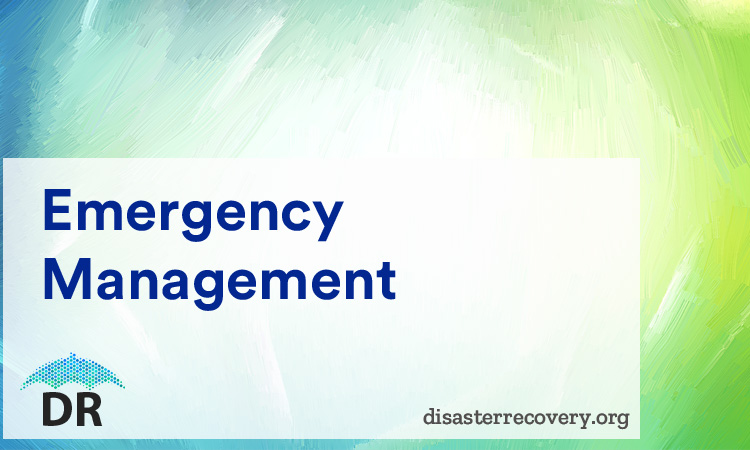Businesses are always vulnerable to hazardous events that threaten the functioning of their daily operations. These events can be caused by
Emergency Management

- natural phenomena
- infrastructure related issues
- social upheavals
- political unrest
Such events can prove detrimental to the activities of any commercial entity. An emergency management plan identifies all possible crisis situations an organization might encounter during the course of a normal working day and strategizes specific solutions to counter them. A carefully prepared emergency plan can safeguard a company’s valuable assets and infrastructure as well as secure the interests of its employee and personnel.
An emergency management plan can be broadly segregated into four categories:
- Prevention/Mitigation
- Preparedness
- Response
- Recovery
Prevention/Mitigation
Prevention refers collectively to the set of precautionary measures to ensure that hazardous events that impede business activity are avoided at all costs. Preventive measures include a careful analysis, assessment and control of risk factors such as the susceptibility of infrastructure to harmful outages, exposure to hazardous material and so on. Risk factors are constantly reviewed and updated for the latest changes. Organizations look to make their systems more resilient to commonly identified risk factors that can hinder business operations. Employees and resources are made aware through periodical training modules on how they can individually as well as collectively contribute towards making their workplace less prone to dire situations.
Mitigation, on the other hand, deals with how to minimize the impact of threats and dangers that cannot be avoided. Mitigating the negative impact of potential risks on business is achieved by suitably adapting a company’s systems and infrastructure to the prevailing physical, climactic, economic and sociopolitical conditions in its area of operations.
Preparedness
Staying prepared is all about constantly expecting the unexpected to happen. Emergency Preparedness deals with making a business unit capable of responding spontaneously to an unforeseen event. Here, an organizational unit tries to stay constantly informed on the latest news and developments that may directly or indirectly affect business operations. This is achieved through real time updates, impact analysis and other similar techniques.
Preparation measures include the installation of facilities such as:
- Refuges
- Warning devices
- Backup power, water and sewage
- Evacuation plans and routes
- Supplies such as food, medicine, flashlight, candles and money
Staying prepared for an emergency can encompass measures that deal specifically with individuals. They can also be elaborated to include larger groups of people and extended all the way up to enterprise wide measures where entire business units are collectively geared up towards staying primed for danger.
Response
This stage of emergency management calls for executing the steps and procedures outlined to confront red alert situations. Emergency Response strategies are selected depending on the ease and speed with which they can be implemented in a crisis situation when time is of the essence. Such responsive strategies also need to be highly effective in achieving results with little or no room for error or slip ups. Geospatial modeling, in situ monitoring and other support frameworks can also greatly improve emergency responses by saving valuable time, energy and resources. Such mechanisms provide immediate access to readily available, real time data such as impacted areas in the vicinity, the extent of damage, nearest evacuation routes etc. shortly after a calamity strikes.
Even the most elaborately researched response strategy can’t factor in all the variables that might come into play during a calamity. Every disaster or emergency is unique in its own way. Hence, any response to crisis should be designed with a generic template that leaves considerable room for improvisation so that a business unit can adapt better to the specificity of each emergency situation.
Recovery
This is the most complex stage of an emergency management plan and often entails the most expenses. Recovery involves rebuilding damaged infrastructure and restoring normalcy to operations. It can be broadly categorized into the following subcategories.
- Disaster assessment – Assessing the impact of a hazardous event provides a broad framework of action for the emergency management team. This phase is also crucial in identifying gaps in existing emergency plans that need to be corrected.
- Short term Solutions – Short term recovery deals with ad hoc solutions that quickly restore damaged systems and assets to normalcy in order to resume operations as fast as possible. Long term implications are not necessarily taken into consideration here. These short term recovery solutions focus primarily on keeping the business downtime and consequently revenue loss to a minimum.
- Long term solutions – Long term recovery deals with incorporating gaps identified during the disaster assessment phase into the emergency plan in order to deal better with future occurrences of the same disaster.
- Recovery management – In this phase, the various tasks executed in the disaster assessment, short term and long term recovery phases are coordinated simultaneously. This helps in engineering an efficient restoration of systems and infrastructure as many of the tasks are interdependent or have overlapping objectives.
Emergency management is a constantly evolving module that is continuously updated with minor and major changes in an enterprise’s immediate environment. Small, medium and large companies benefit from having an emergency plan of action in place that can help avoid unnecessary expenditure on repair and restoration of damaged systems and infrastructure.

